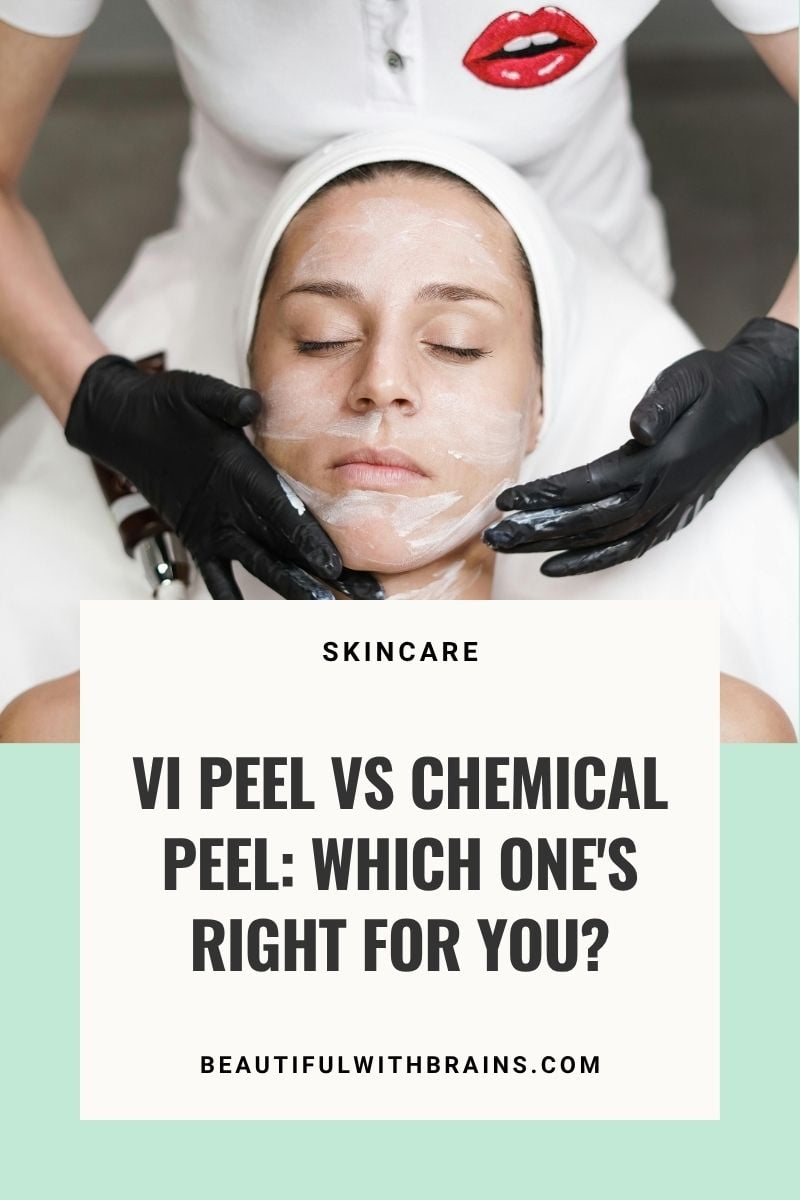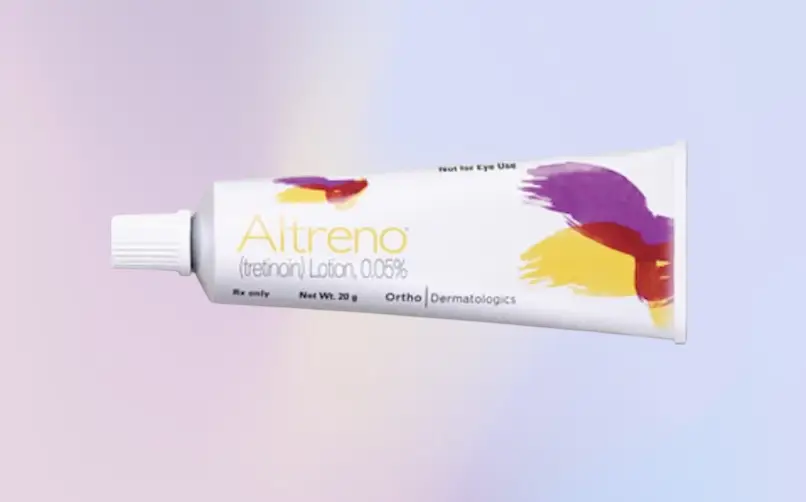
Okay so you fell down a TikTok hole at like 3am watching people peel their faces off and now you’re googling vi peel vs chemical peel and you’re confused as hell. I feel you. Here’s the deal: a VI Peel IS a chemical peel. Plot twist, right? But it’s got some different stuff in it that makes it not quite the same as what your aunt got at the mall spa in 2005.
What’s a Chemical Peel Anyway?
So basically someone puts acid on your face and it breaks apart the glue holding your dead skin cells together. Like, your skin cells are stuck together with this protein stuff, and the acid just dissolves it. Your skin freaks out and is like “oh shit we’re damaged” so it kicks into overdrive making new collagen. That’s the protein that keeps your skin from looking like a sad deflated balloon. It also makes your cell turnover speed up – that’s just how fast new cells push the old crusty ones out.
Different peels go to different depths. Superficial peels only mess with your top layer, the epidermis. Medium-depth peels get into your dermis, which is the thick meaty layer under that with all your blood vessels and nerves and stuff. Deep chemical peels go DEEP into that dermis layer. The acids they use are things like glycolic acid (from sugar cane), lactic acid (yeah, from milk products), salicylic acid (it’s related to aspirin actually), or trichloroacetic acid.
Related: AHAs VS BHA: Which Exfoliating Acids Are Better For You?
Struggling to put together a skincare routine that minimises wrinkles, prevents premature aging, and gives your complexion a youthful glow? Download your FREE “Best Anti-Aging Skincare Routine” to get started (it features product recommendations + right application order):
Why’s Everyone Talking About VI Peel?
VI Peel is like a cocktail of acids. They mixed:
- 10-12% trichloroacetic acid: breaks apart your skin cells so your body’s like “oh crap gotta fix this” and pumps out fresh collagen
- 10-12% salicylic acid: dissolves in oil which is clutch cause it can actually get inside your pores where all the gross stuff lives and clean it out – that’s why it murders acne scars
- 0.1-0.4% retinoic acid: makes your skin cells turn over way faster (like half the normal time) and tells the pigment-making cells to chill so you don’t end up with dark spots
- 10-12% phenol: goes deep but also numbs you so it doesn’t hurt like a bitch
- 4% vitamin C: fights the sun damage molecules that wreck your collagen, helps make more collagen, and brightens everything up.
It’s medical-grade so you can’t just grab it off a shelf and go nuts with it at home. The big thing? It works on all skin types. You know how some peels make darker skin worse with crazy dark spots? That’s your pigment cells freaking out. VI Peel’s got that mix of retinoic acid and vitamin C that keeps those cells from going nuts while you heal.
How’s It Different From Regular Peels?
Traditional chemical peels come in levels. Light peels use weak acids like alpha hydroxy acids – usually 20-30% glycolic acid or lactic acid. They only strip off your top layer of dead skin cells, so there’s basically no recovery time. People call them “lunchtime peels” cause you can get one and go right back to the office. But you need regular peels over like months to see much difference cause they’re so gentle.
Medium peels usually use stronger trichloroacetic acid, like 35%, or mix it with other stuff. These actually get into your dermis where your blood vessels live, and that’s what kicks your collagen production into high gear. That depth is what can actually fix acne scars and deeper wrinkles. But conventional chemical peels at this level leave you looking kinda rough for 7-14 days with redness and obvious peeling skin.
VI Peel is also medium-depth but here’s the thing: instead of just blasting your face with one strong acid, it uses a blend of powerful ingredients that each do different jobs. So the salicylic acid handles your pores, the TCA makes collagen happen, the retinoic acid speeds everything up, and the phenol numbs it all. You still get down to that dermis layer where the magic happens, but you’re usually only peeling for like 5-7 days instead of two weeks. Way more minimal downtime.
Deep peels use phenol at like 50%+ concentration and they go WAY down into your dermis. They can fix severe wrinkles and major sun damage because they’re basically creating a controlled injury that forces your entire skin to rebuild from scratch. But you’re talking weeks of recovery time, you need to be sedated cause it hurts like hell, and only doctors can do them.
VI Peel VS Chemical Peel Benefits
Both can help with acne scars – the actual dented ones, not just the red marks left behind. When you get gnarly acne, it messes up the collagen holding your skin together. Peels make your body create new collagen that fills in those dents. They also help with age spots and sun spots, which are just clumps of melanin that got stuck in one place from too much sun. The acids break up those clumps.
For fine lines, peels strip off that top layer where the lines are etched in, plus your body makes new collagen underneath that puffs everything back up. Uneven skin tone? That’s just melanin chilling in random spots-peels spread it out evenly as new skin grows.
VI Peel hits various skin concerns all at once. Salicylic acid kills the bacteria causing acne while cleaning your pores and calming inflammation. Retinoic acid’s like “yo pigment cells, relax” so you don’t get dark spots. Vitamin C fights those free radical things from sun damage that destroy your collagen and make you age faster.
Traditional peels do the same stuff but usually stick to one main acid. Glycolic peel breaks up dead skin cells to speed up cell turnover. TCA peels go deeper and wake up the cells in your dermis that make collagen. What’s the right peel depends on your specific skin concerns and what your skin looks like right now.
Related: What Really Works To Treat Acne Scars
VI Peel VS Chemical Peel Side Effects
Okay so nothing’s perfect, right? Both VI Peel and traditional peels come with some side effects you gotta deal with. With any peel, you’re gonna get redness, like you fell asleep in the sun. That’s normal, your skin’s healing. You’ll also get peeling (duh) and some flaking. Your skin might feel tight and dry, kinda like after you’ve been swimming in chlorine all day.
VI Peel usually has minimal discomfort cause of that phenol numbing thing, but some people still feel stinging or burning while it’s on. After a few days when the peeling starts, it can get itchy as hell. Don’t pick at it though, seriously, you’ll mess everything up. Traditional peels? Depends on the depth. Light peels are whatever, maybe some mild stinging. Medium peels can burn during the treatment and you might get swelling after. Deep peels are brutal. We’re talking significant swelling, oozing, and you might need actual pain meds.
The scary stuff is when things go wrong. Post-inflammatory hyperpigmentation is the big one, especially for darker skin tones. That’s when your skin freaks out from the injury and makes way too much pigment, so you end up with dark patches. VI Peel’s less likely to do this but it can still happen if you don’t follow the aftercare or if you go in the sun. Other possible side effects: infections if you don’t keep it clean, scarring if you pick at it or if the peel goes too deep, and with deep peels there’s risk of permanent skin lightening or even heart problems from the phenol getting absorbed.
You also can’t be in sun exposure AT ALL while you’re healing. Your new skin has zero protection and will get absolutely wrecked. And if you’re on certain meds or have active cold sores, peels can make that way worse.
How Long Does It Take To Recover?
VI Peel’s not that bad honestly. Recovery time is pretty chill. You’ll peel, duh, but you don’t have to ghost everyone for a month. Superficial peels you’re just pink for a bit. Medium peels – VI or regular – you’re gonna be flaky. But VI Peel’s got numbing stuff in it already so at least it doesn’t hurt like a bitch. Deep peels? Hell no. Major downtime, possible side effects, can’t see the sun. Yeah maximum results but also maximum suffering.
VI Peel VS Chemical Peel: Which One Do I Actually Need?
You can’t just pick one yourself, you need a skincare professional to look at your actual face. Your skin’s texture, whatever’s bothering you about it, your skin type-matters. VI Peel’s probably the best option if you’ve got sensitive skin, trying to fix a bunch of stuff at once, or can’t be off the grid forever. Also clutch if you have darker skin tones and you’re scared of making it worse.
Traditional peels might be it if you’ve only got one thing to fix, want something super mild, or need something nuclear for severe wrinkles or gnarly scars. Regular chemical peels, especially the light ones like lactic acid, are good if your skin’s already pretty okay and you’re just maintaining.
The Bottom Line
Both VI Peel and conventional chemical peels will get you that radiant complexion if that’s what you’re after. They both yeet the outer layers of skin so the good stuff shows up. Both help with collagen production and give you noticeable improvements. VI Peel’s a popular choice cause it’s like the goldilocks option-benefits of a medium depth peel without wanting to die. That unique blend of ingredients handles different types of problems in one go.
But for real: the perfect peel for you depends on your individual needs and how much your life can handle being disrupted. First step is booking a consultation. Just follow whatever aftercare they tell you, stay out of the sun (get a good browser extension to remind you if you’re forgetful), and let it heal. You’ll get the noticeable results and more even skin tone you want.










